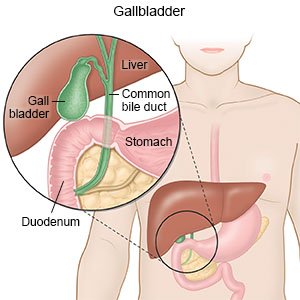Percutaneous Transhepatic Biliary Drainage
Medically reviewed by Drugs.com. Last updated on Apr 6, 2025.
Percutaneous transhepatic biliary drainage (PTBD) is a procedure to open a blocked bile duct.
 |
DISCHARGE INSTRUCTIONS:
Call your local emergency number (911 in the US) if:
- You have new trouble breathing.
- You are coughing or vomiting blood.
- You are dizzy, or you feel too weak to stand up.
Seek care immediately if:
- You have a drainage bag, and there is little or no fluid draining into the bag.
- Your abdomen is hard, swollen, or painful.
- Your tube falls out.
- Your bowel movements look red, or you see blood in the toilet.
Call your doctor or surgeon if:
- Your skin or the whites of your eyes look more yellow than usual.
- You have a fever.
- You have nausea or are vomiting.
- Your bowel movements have changed color and are very light or dark.
- Your skin around the tube itches or is red, swollen, or painful.
- You have questions or concerns about your condition or care.
Medicines:
You may need any of the following:
- Antibiotics help prevent or treat a bacterial infection.
- Prescription pain medicine may be given. Ask your healthcare provider how to take this medicine safely. Some prescription pain medicines contain acetaminophen. Do not take other medicines that contain acetaminophen without talking to your healthcare provider. Too much acetaminophen may cause liver damage. Prescription pain medicine may cause constipation. Ask your healthcare provider how to prevent or treat constipation.
- Take your medicine as directed. Contact your healthcare provider if you think your medicine is not helping or if you have side effects. Tell your provider if you are allergic to any medicine. Keep a list of the medicines, vitamins, and herbs you take. Include the amounts, and when and why you take them. Bring the list or the pill bottles to follow-up visits. Carry your medicine list with you in case of an emergency.
PTBD tube care:
Your healthcare provider will show you how to care for your tube and the skin around it. If you have a bag attached to the PTBD tube, you will need to check for bile in the bag. Ask how much bile should be in the bag and what color it should be. You will need to make sure the PTBD tube is not blocked. Ask your healthcare provider how and when to flush the tube.
Follow up with your doctor or surgeon as directed:
You may need to return so your healthcare provider can check your tube. You may also need more tests. Write down your questions so you remember to ask them during your visits.
© Copyright Merative 2025 Information is for End User's use only and may not be sold, redistributed or otherwise used for commercial purposes.
The above information is an educational aid only. It is not intended as medical advice for individual conditions or treatments. Talk to your doctor, nurse or pharmacist before following any medical regimen to see if it is safe and effective for you.
Further information
Always consult your healthcare provider to ensure the information displayed on this page applies to your personal circumstances.
